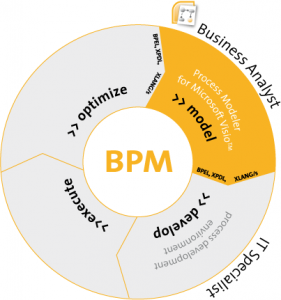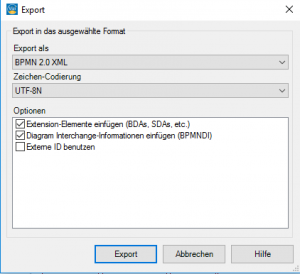Experience the complete roundtrip
Process Modeler now supports XPDL 2.1, BPEL 2.0 and BPMN 2.0 XML Serialization
Process Modeler has been designed to support XML serialization for all relevant open standards:
BPMN 2.0 Mode
- BPMN 2.0 serialization by the Object Management Group (OMG)
BPMN 1.2 Mode
- XPDL (currently XPDL 2.1) by the Workflow Management Coalition (WfMC)
- BPEL (currently BPEL 2.0) by the OASIS consortium
- XLANG/s by Microsoft
Process Modeler supports BPMN 2.0 export (XML de- and serialization), as well as XPDL, BPEL and XLANG/s roundtrip engineering.




